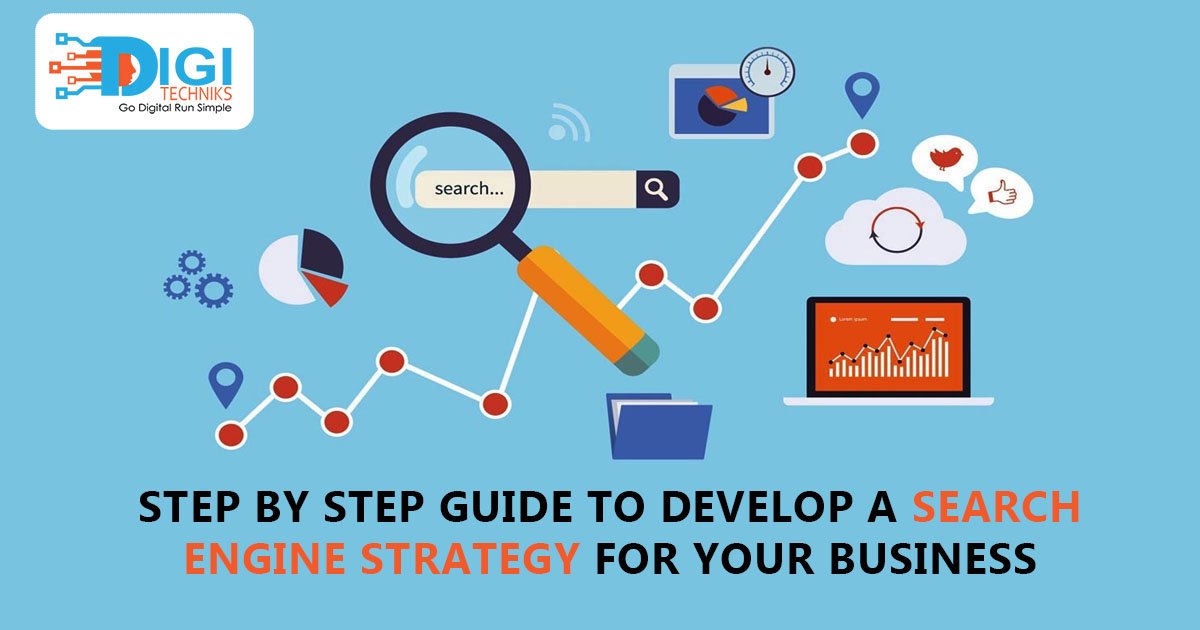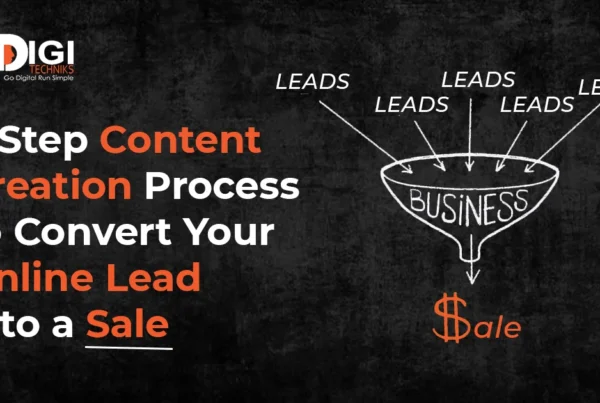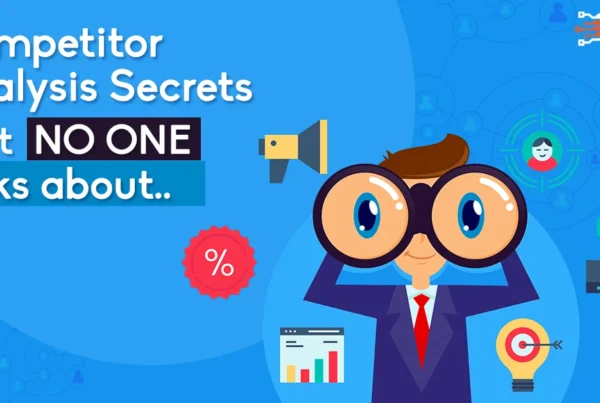
You do SEO and SEM but do you have a strategy to make it work for you?
You are spending money on SEO and SEM but do you have systems to track the growth ?
If not yet then it is the time for you to take action and design a search engine strategy for your business to fix these issues.
So, how do you use search engine tactics to crush the competition?
How do you use them effectively to grow your business online?
That’s what a search engine strategy is all about.
While most businesses realize that they need to have a search engine strategy in place, few have an integrated plan to grow their online presence and engage their audiences effectively.
In fact, it is estimated that 49% of organizations do not have a clearly defined online marketing strategy.
However, that’s easier said than done. Ranking high on SERPs is becoming insanely competitive and driving your business online has become more difficult than ever.
Companies of all sizes are scrambling to stay at the top of the search engine rankings. But, achieving this requires more than simple SEO fixes here and there.
“It requires a comprehensive strategy.”
Time and Money Wasted
“I’ve spent more than ‘X’ amount of money on SEO but didn’t get any quality leads. It’s a waste of time.”
Every once in a while, we hear someone talking about their failed online marketing efforts.
Often, they make such bold claims and go on to blame internet marketing channels.
In truth, marketing campaigns — be it online or offline, SEO or SEM — without a strategy is doomed for failure.
If you’re not seeing the desired results from your search engine activities, then probably you’re going by ‘let’s throw it at the wall and see what sticks’ mentality.
Or, simply your campaigns are being handled by an incompetent team.
Whatever be the reason, one thing is for certain — your search engine marketing isn’t working because it wasn’t done correctly.
In the absence of a clear and focused strategy, your search engine activities won’t generate the desired results.
What is a Search Engine?
We all know how to use Google, which is nothing but a search engine. So what is it really?
A search engine is software that allows internet users to search for the information they are looking for.
When users type the keywords into a search engine and hit “enter”, it generates a list of content in the form of websites, images, videos or other online data.
This list of content is referred to as a search engine results page or SERP.
In other words, search engines answer users’ queries by offering the most relevant and informative content.
And this is one of the basic reasons for businesses to focus on creating high-quality content that provides answers and solutions to their target audience.
What is SEO?
It is the practice of optimizing (making changes) the web pages in such a manner that your web pages are liked and understood by search engines better than others.
As a result of it search engines would prefer your web pages over other web pages while showing the results on search engine result pages (SERP) for a particular query.
SEO or Search Engine Optimization is the practice of driving more high-quality traffic to your website, while also enhancing your brand awareness and visibility through non-paid (also known as “organic”) search engine results.
It may seem like SEO has everything to do with the search engines, but the truth is, it is just as much about people — the users — as well.
Understanding this is critical because ultimately, the point of SEO is to help people get proper answers to their queries online.
So, a business needs to be mindful about the words people are using and the type of content they wish to consume. This will help them connect with and engage the people who are searching online for the solutions you offer.
What is SEM?
SEM or Search Engine Marketing is a marketing technique that allows businesses to use paid advertisements — often known as pay-per-click ads — that appear on search engine results pages (or SERPs) to attract ready-to-buy customers.
Advertisers bid on keywords that search engine users might type in when looking for certain products or services.
Unlike, SEO which will organically earn you a spot on the SERPs by having the most relevant content for a given keyword search, SEM is a paid strategy and involves paying search engines for traffic and clicks.
However, both SEO and SEM should be fundamental parts of your search engine strategy. Why? Because while SEO is a powerful way to drive consistent traffic at the top of the funnel, search engine ads help to drive conversions at the bottom of the funnel in a cost-effective way.
Related Article– The Definitive SEO Guide to Growing Small and Medium Businesses
Steps to Develop an Integrated Search Engine Strategy
1. Identify your business goals
The first step to creating a search engine strategy is to understand your business objectives and what goals you’re trying to accomplish through your search engine efforts.
Your overall focus is to drive more traffic to your website, but your goal should be more defined than that.
Therefore, you need to list down your goals — it could be increasing your sale, creating a buzz around your brand, generating more leads, or establishing yourself as an authority figure in your industry.
This is important because the traffic you’re meaning to drive needs to carry out certain specific actions in order to convert. Without clear goals,
it’s hard to navigate your visitors in a way that they perform the actions that will bring the outcome you desire.
2. Identify search behavior
Having a clear sight of your business goals will help you refine your target audience by recognizing the search behavior of users.
You should gain insight into how consumers search using Google services like Keyword Planner, Search Console, and Google Trends.
You should also use search queries and SERPs to determine a user’s search intent, gaining an idea about their motivations and buying preferences.
You should carry out these steps to figure out the keywords that people interested in your products/services are searching for globally or locally within a specific area.
Doing this ensures your search engine strategy is targeted at buyers who are more likely to convert.
3. Identify and segregate keywords
In this step, you need to create your keyword lists and optimize your keyword strategy.
Think of the most relevant words pertaining to your product or service and the possible search queries your potential customers are likely to type when looking for this kind of product or service.
You should use tools like the SEMrush SEO keyword tool to know the keywords your competitors are using.
Within this step, another important function is to understand and separate the two broad categories of keywords:
Transactional Keywords: These types of keywords (also referred to as “know” keywords) are typically used by buyers who have already searched for information, have made a purchase decision and are now ready to make a purchase.
Such keywords feature words like “buy”, “sale”, “rent” etc. For example, “buy black leather shoes”. As you can see, these keywords are more specific and they may describe the product or service more precisely.
Informational Keywords: These are keywords that people are searching for information typically before making any purchase decisions.
These keywords usually contain words like “how”, “where,” “when,” and so on. While these keywords have high search volume, they don’t help much indirect conversions.
4. Build landing pages with transactional keywords
Landing pages are the pages where people enter into your website (Generally they have any commercial intent).
As transactional keywords allow businesses to directly target people who have the intention to buy a product or service, they are the perfect candidate to be included in landing page content.
Because most people are actively looking to buy products or services when they are searching for transactional keywords.
Through proper use of these keywords, you can lead potential buyers to your landing page and provide the information they need to make a purchase.
Generally, the main service pages, category pages and product pages are giving us more business so these are landing pages.
5. Create blogs with informational keywords
People ask questions when they need information and when you answer these questions they take you as an advisor.
Informational keywords are great to target customers in the awareness phase. These are people who are just beginning to realize their need for a product or service.
By creating blogs that answer the “how”, “what”, and “ways to” types of queries, you help potential customers know more about a topic, a problem, product, or service.
If your potential customers are getting answers to their problems or queries by you again and again they become your loyal fans and they start taking or recommending your products or services whenever they require.
6. Rank the landing pages for transactional keywords and blogs for informational keywords
Now your goal should be to rank for all the transactional keywords at the top of the search engine result pages. (No matter how)
You should use SEM or PPC to rank from day 1 to rank on top 3 positions in SERPs for all commercial keywords.
If you do not rank ASAP you lose to your competitor.
After you have segregated your transactional and informational keywords and included them within the content of your landing pages and blogs respectively, it’s time to take action to make sure they rank for those keywords.
Depending on whether you’re looking for organic growth in SERPs or faster results through paid ads, build your SEO or SEM action plan to meet your online marketing goals.
Your SEO strategy should be started parallely for transactional and informational keywords so that over the period of time your cost per acquisition or cost per lead can be reduced.
7. Create systems to collect data in form of cookies and leads
This step is very much important to understand the type of people coming to your website and to retarget them.
In this age of data, collecting data of potential and existing customers should be a top priority for all businesses.
Not only does it provide a steady supply of high-quality leads, but also helps fine-tune your marketing campaigns.
This can be done in a number of different ways. You can set up cookies, which can be used to identify unique users and store information about them for future campaigns via Google Analytics. You must also build your email list.
For this, you can use email capture or opt-ins on various pages of your website to collect email addresses of customers legally.
You should use facebook pixel (to collect the cookies from facebook and instagram campaigns), google tracking codes (to collect the cookies from google campaigns), google analytics code (to collect the cookies of paid and organic visitors), UTM parameters (To understand and analyze the traffic source and mediums) and email tracking codes (To collect cookies from email campaigns)
To Know More About How to Generate Leads, Read this Blog– Supercharge Your Leads from Google Ads With These Simple Steps
The key here is to take the analytical approach and improve the performance of our digital marketing campaigns day by day.
If we have these systems in place our results get better day by day and we win the game.
8. Build a remarketing strategy for better results
Remarketing (also known as retargeting) is a technique to draw those people into your sales funnel who have already had online interactions with your business.
The idea behind this practice is that customers familiar with a business are more likely to engage with their advertising.
So someone who has browsed your website or used your app, for example, can be remarketed to by ads to persuade them to come back and sign up for free trials of products/services.
Remarketing is a powerful activity, which has shown to generate more conversions — a retargeted website visitor is 70% more likely to convert on an offer than a new visitor. Because he has already seen your brand before.
Although, how you set up your remarketing campaign depends on your business goals and target customers.
Retarget them at every possible place using the tracking codes you have set up in the previous step so that they do not forget the activity they have performed on your web page or app. Finally, remember to monitor success, track your goals, and assess your strategy from time to time. Establish and evaluate your performance data, such as your sales goal, ad clicks, and impressions, etc. to make sure you’re on the right track.
Whether your search engine strategy didn’t take off as intended or you never had one to begin with, we hope this guide helped you understand some of the basics and primary steps to get started with an effective search engine strategy. If you want to know in detail about such search engines strategies for your own business attend our free webinar on “search engine strategy and planning.”
Do you want to get a personalised 1-to-1 discovery session?
Book your 1-to-1 discovery call with us today!



